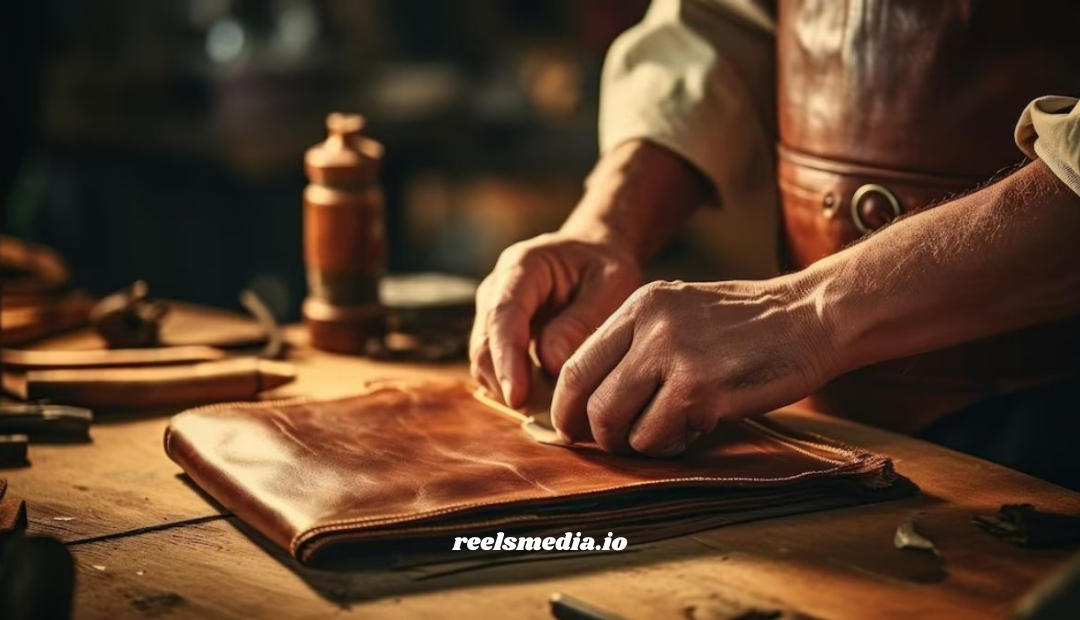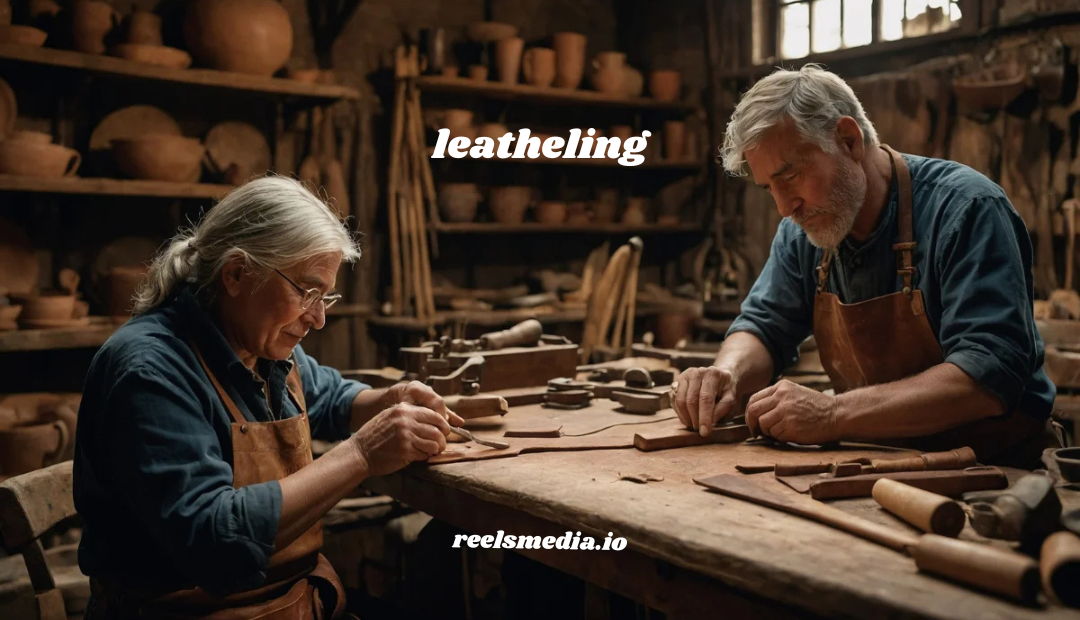When I first learned about Leatheling, I was fascinated by how a material could connect design, engineering, and innovation so seamlessly. Its properties are inspiring because they mix craftsmanship with durability, making it useful across multiple industries like fashion, technology, and sustainability. I noticed that this new approach creates opportunities for both creative and practical applications.
In my experience, working with structure and capability often demands accuracy and execution, but this hybrid solution seems to hold more promise. The art behind it shows that performance does not have to come at the cost of the planet. Whether someone is exploring eco-friendliness or testing fresh manufacturing techniques, the growth of Leatheling feels like a step forward.
What is Leatheling?
Leatheling can be understood as a composite that combines strength, flexibility, and environmental awareness. It can mimic leather through a sustainable process using recycled and biodegradable sources like plant-based fibers, scraps, or polymers. By choosing non-toxic chemicals, the footprint becomes much smaller compared to traditional practices.
I see it as a meeting point of design and innovation, where craftsmanship is paired with furniture, accessories, or décor. In real projects, the utility of this hybrid shows how appearance and texture can remain appealing while being more responsible. For those concerned about deforestation, tanning, and heavy impacts on water, this material brings much-needed relief.
Origins of Leathering
The development of Leathering comes from rising demand for sustainable materials in fashion and manufacturing industries. More consumers became aware of environmental and ethical implications of production, so researchers searched for better alternatives.
I found the reliance on functional and eco-friendly methods quite interesting. For example, using organic compounds and recycled inputs adds value not just in production but also in how people feel about their purchase. This focus shows that caring about the planet can align with beauty and design.
Craftsmanship in embodiment
True craftsmanship reflects an embodiment of skill and detail, requiring persistence, precision, and a drive for excellence. Every artistic creation depends on design and aesthetics, but also on commitment to functionality and purpose. This dedication ensures balance between form, utility, and appeal.
When working with materials such as wood, leather, metal, or fabric, respect for qualities, durability, and ethical sourcing matters. By valuing sustainability and focusing on expertise, artisans use techniques, processes, and tools that showcase knowledge and skill.
The result is mastery in every piece, where creativity, vision, and individuality shape uniqueness and expression. Combining traditional methods with innovation preserves authenticity and deep artistry. For collectors, enthusiasts, and lovers of timeless yet contemporary work, this connection makes the outcome truly meaningful.
Applications of leathering
One exciting part of leathering is how it appears in fashion as a vegan alternative embraced by eco-conscious brands. Products like handbags, jackets, shoes, and belts can remain stylish while supporting better choices.
In the automotive field, interiors built with durability and resistance help against fading or staining, giving vehicles a premium feel. In my own car project, I enjoyed experimenting with smartphone covers and laptop skins that used this lightweight but tough solution.
Beyond that, furniture and upholstery such as couches, chairs, or stain-resistant designs make homes easier to maintain. Families with children or pets appreciate how easy it is for cleaning. Even sports equipment like footballs, gloves, and boots benefits from moisture tolerance, showing how broad the equipment range is.
Benefits of leathering
Using leathering comes with vegan, cruelty-free values that reduce harm to animal welfare. It can be customizable for being dyed, molded, or shaped without losing integrity. This adds resilience when compared to weaker options.
The focus on sustainability means inputs are often biodegradable or recyclable, helping to lower footprint and avoid toxic chemicals. My personal projects highlighted how strength and lifespan really show up in high-traffic areas where resistant materials matter.
Another major point is versatility since a variety of finishes, textures, and colors can suit different needs. Add in flexibility, affordable pricing, and production efficiency from modern fibers, and the balance of quality with appealing appearance makes sense.

leathering vs. Traditional Leather
When comparing leathering with traditional choices, the sustainability and eco-friendly advantage is clear. Its lower environmental impact supports better decisions for design. The durability of long-lasting use also limits maintenance and reduces early deterioration.
In terms of cost, many find it more affordable since expensive sourcing challenges are avoided. I noticed that aesthetic options like wide textures sometimes feel more creative than authentic but limited flexibility of older types.
Old systems linked to deforestation, pollution, tanning, and animal slaughter highlight ethical concerns. High price from farming and processing adds another barrier, whereas breathability, performance, resistance, and water or stain protection make the new version stronger in durability.
Environmental Benefits
Research showed energy use in production can be cut by 40%, proving a clear gap against conventional leather. Likewise, the ability to reduce CO2 emissions up to 30% makes the solution even more impressive.
Compared with synthetic materials, the gain is even larger. I personally saw how my own workshop relied less on extra resources once I made the switch.
Caring for Products
Everyday cleaning is simple since dirt, stains, and dust can often be wiped away with a damp cloth and mild soap. For more stubborn spots, I avoid harsh chemicals and instead use gentle cleaners.
In storage, keeping products in a cool, dry place away from sunlight prevents fading or degradation. Simple steps extend their life without much effort.
Unlike traditional care, ongoing maintenance or heavy conditioning is not necessary. Still, I often check for wear or tear in high-use zones just to be sure everything stays fresh.
Future of Leatheling
The future looks promising, with some predicting growth at 15% each year for a decade. Areas like wearable technology and smart clothing stand out as emerging spaces where it can become mainstream.
I believe its role in sustainable packaging or biodegradable solutions will expand further. My own tests with everyday boxes gave me confidence in its strength.
Seeing it tied to luxury, but also accessible to normal consumers, highlights how innovation drives adoption.
Tips for Working
When shaping, I always apply low heat while molding and shaping designs. This protects the material from unnecessary stress.
Adding a water-resistant coating makes sense for outdoor projects. It helps maintain durability when exposed to natural elements.
I also recommend using sharp cutting tools to avoid edge fraying, especially when handling small or complex edges.
FAQs
Is Leatheling more expensive than leather?
No, affordable, traditional, leather, sustainable, production, process, cost
How durable is?
Durability, resistance, wear, tear, high-traffic, applications
Can be recycled?
Recycled, environmentally, friendly, choice
What industries benefit most?
Industries, fashion, automotive, technology, adopters.
How is made?
Plant-based, materials, synthetic, polymers, recycled, waste, environmental, impact
Is cruelty-free?
Cruelty-free, animal, ethical
Is easy to clean?
Clean, resistant, stains, dirt, maintenance
Can Leatheling replace leather in sports equipment and upholstery?
Leatheling, sports, equipment, upholstery, durable, furniture, resistance, moisture, toughness
